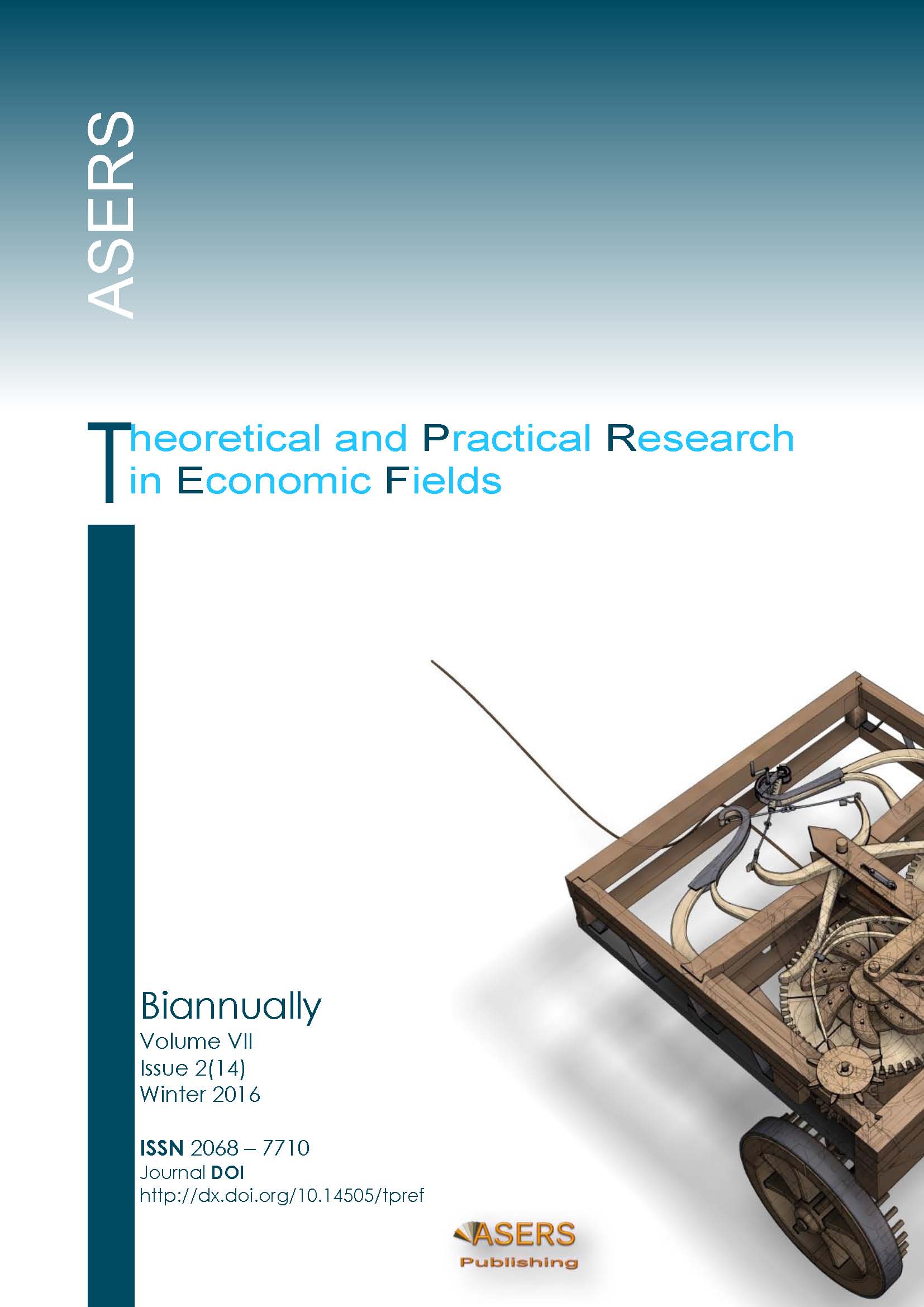TESTING NON-LINEAR DYNAMICS, LONG MEMORY AND CHAOTIC BEHAVIOUR OF ENERGY COMMODITIES
Abstract
This paper contains a set of tests for nonlinearities in energy commodity prices. The tests comprise both standart diagnostic tests for revealing nonlinearities. The latter test procedures make use of models in chaos theory, so-called long-memory models and some asymmetric adjustment models. Empirical tests are carried out with daily data for crude oil, heating oil, gasoline and natural gas time series covering the period 2010-2015. Test result showed that there are strong nonlinearities in the data. The test for chaos, however, is weak or no existing. The evidence on long memory (in terms of rescaled range and fractional differencing) is somewhat stronger although not very compelling.
References
[2] Abarbanel, H.D.I., Brown, R., and Kennel, M. B. 1991. Variations of Lyapunov exponents on a strange attractor, Journal of Nonlinear Science 1: 175-199.
[3] Abarbanel, H. D. I. 1996 Analysis of Observed Chaotic Data, Springer New York.
[4] Adrangi, B., and Chatrath, C. 2001. Chaos in oil prices? Evidence from futures market, Energy Economics 23: 405-425.
[5] Bask, M., and Gençay, R. 1998. Testing chaotic dynamics via Lyapunov exponents, Physica, 114: 1-2.
[6] Bask, M. 1998. Deterministic chaos in exchange rates? Umeå Economic Studies No 465c, Department of Economics, Umea University, Sweden.
[7] BenSaida, A. 2015. A practical test for noisy chaotic dynamics, ScienceDirect, Software, X: 3–4, 1–5.
[8] BenSaida, A. 2014. Noisy chaos in intraday financial data: Evidence from the American index, Applied Mathematics and Computation, 226: 258–65.
[9] Brock, W., Dechert, W., Scheinkman, J., and LeBaron, B. 1996. A test for independence based on the correlation dimension, Econometric Reviews 15: 197-235.
[10] Chatrath, A., Adrangi, B., and Dhanda, K. 2002. Are commodity prices chaotic? Agricultural Economics, 27: 123-137.
[11] Dechert, W., and Gençay, R. 1992. Lyapunov exponents as a nonparametric diagnostic for stability analysis, Journal of Applied Econometrics, 7: S41-S60.
[12] Dechert, W., and Gençay, R. 2000. Is the largest Lyapunov exponent preserved in embedded dynamics?, Physics Letters A, 276: 59-64.
[13] Eckmann, J. P., Kamphorst, S. O., Ruelle, D., and Ciliberto, S. 1986. Lyapunov exponents from time series, Physical Review A, 34, 6: 4971-4979.
[14] Eckmann, J. P., and Ruelle, D. 1985. Ergodic theory of chaos and strange attractors, Reviews of Modern Physics, 57: 617-650.
[15] Gençay, R., and Dechert, W. 1992. An algorithm for the n Lyapunov exponents of an n-dimensional unknown dynamical system, Physica D, 59: 142-157.
[16] Gençay, R., and Dechert, W. 1996. The identification of spurious Lyapunov exponents in Jacobian algorithms, Studies in Nonlinear Dynamics and Econometrics, 1: 145-154.
[17] Gençay, R. 1996. A statistical framework for testing chaotic dynamics via Lyapunov exponents, Physica D, 89: 261-266.
[18] Grassberger, P., and Procaccia, I. 1983. Characterization of Strange Attractors, Physical Review Letters, 50: 346-394.
[19] Gunay, S. 2015. Chaotic Structure of the BRIC Countries and Turkey’s Stock Market. International Journal of Economics and Financial Issues, 5(2): 515-522.
[20] Kantz, H., and Schreiber, T. 2004. Nonlinear time series analysis Cambridge University Press, 2nd edition.
[21] Panas, E., and Ninni, V. 2000. Are oil markets chaotic? A nonlinear dynamic analysis Energy Economics, 22: 549-568.
[22] Rosenstein, M., Collins, J.J., and De Luca, C. 1993. A practical method for calculating largest Lyapunov exponents from small data sets, Physica D, 65: 117-134.
[23] Schuster H. G. 1995. Deterministic Chaos: an introduction, VCH Verlasgesellschaft, Germany.
[24] The MathWorks, Inc. 2015. MATLAB: The Language of Technical Computing, Natick, Massachusetts, Available at: http://www.mathworks.com/products/matlab.
[25] Wolf, A., Swift, B., Swinney, and Vastano, J. 1985. Determining Lyapunov exponents from a time series, Physica D, 16: 285-317.
Non-Exclusive License under Attribution 4.0 International Public License (CC BY 4.0):
This ‘Article’ is distributed under the terms of the license CC-BY 4.0., which lets others distribute, remix, adapt, and build upon this article, even commercially, as long as they credit this article for the original creation. ASERS Publishing will be acknowledged as the first publisher of the Article and a link to the appropriate bibliographic citation (authors, article title, volume issue, page numbers, DOI, and the link to the Published Article on ASERS Publishing’ Platform) must be maintained.
